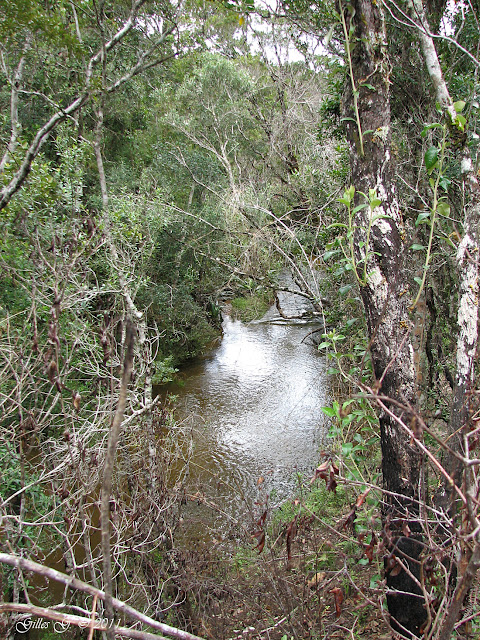In the first day lights, after a copious breakfast, we resume our road for a day which, we do not know it yet, is going to be one of more hard day, one of the more painful day.
We immediately find some blooming orchids and everybody want to photograph them...but we do not realize that it we slowed down a little more every time...
Cynorkis calanthoides et Angraecum linearifolium
Once again our progress is difficult.
It is necessary to us to cross numerous little rivers, to by-pass hills, to climb stiff and slippery slopes.
For the first time I found myself in a river, having slid on a rock, but fortunately I managed to save my cameraIt is necessary to us to cross numerous little rivers, to by-pass hills, to climb stiff and slippery slopes.
We meet for the first time a boa, perfectly concealed in high grass...
We see the Ikongo Mount, but we won't climb it, we won't have time.
We are too "slow", but we find so many orchids to photograph that it is normal...normal, but worrisome because we absolutely have to arrive at the next village before the nightfall
Ikongo Mount We are too "slow", but we find so many orchids to photograph that it is normal...normal, but worrisome because we absolutely have to arrive at the next village before the nightfall
Oeonia curvata
Jumellea sp.
We are still far from this village, but already we discover the first zones where the forest was destroyed to give way to cultures
The weather is good for the moment and this small river which we cross for the first time is still quiet...
...but once again a thunderstorm bursts and the problem is that all this rain is going to make rise the water level of the river.
Before to arrive finally at the village, we have to cross several times this river and the level does not stop rising.
Before to arrive finally at the village, we have to cross several times this river and the level does not stop rising.
At the end we have to carry our bags above our heads!!
After 12 hours of walking, we finally arrive...exhausted!!























































